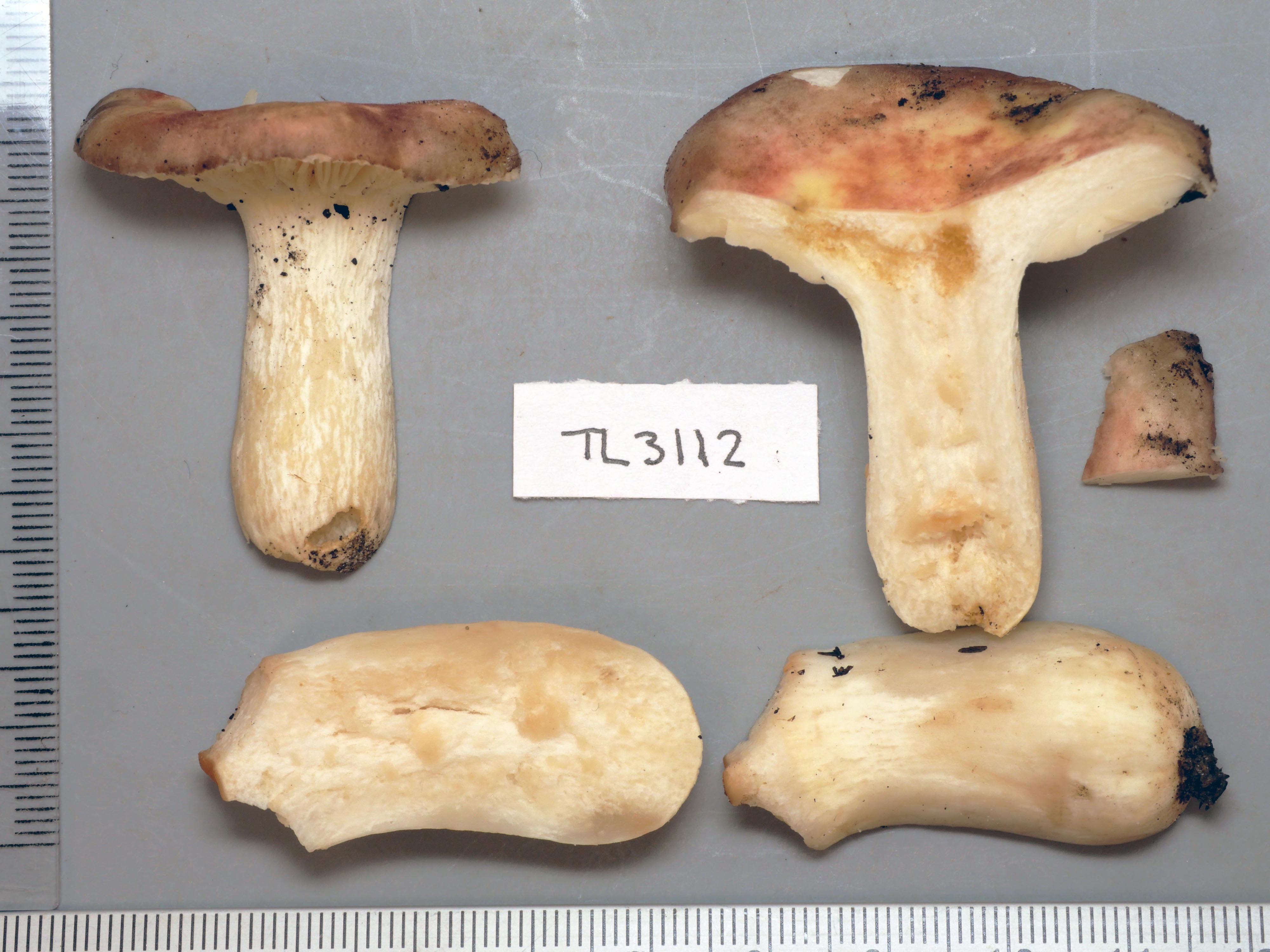
Russula sp. KIS4, TL3112
The genus Russula is large with more than 1600 species worldwide. Many form generally large and often colourful mushroom-like fruiting bodies with brittle stems and others are truffle-like, fruiting underground. They form ectomycorrhizal associations with trees, supplying the tree with minerals and water in return for products of photosynthesis. Russula sp. KIS4 is associated with the large eucalypt known as Sugar Gum, Eucalyptus cladocalyx, which occurs naturally only on Kangaroo Island, Eyre Peninsula and in the Southern Flinders Ranges in South Australia. However, it is widely planted as a wind break and for timber, becoming naturalised in other parts of Australia and widely around the world. The stem fragments in the image of Russula sp. KIS4 are part of the sequenced specimen. The collection was made at Rocky River Bridge in Flinders Chase National Park on Kangaroo Island as part of a project investigating the transition from mushroom-like fungi to truffle-like fungi. Comparison of the genomes of Russula sp. KIS4 with truffle-like Russulas is anticipated to help understand this transition toward a subterranean lifestyle which is believed to be an adaptation to a drying climate, a trait with economic potential in future forestry. We request that researchers wishing to publish analyses of this genome prior to its publication by the consortium to please email [email protected] and JGI for permission.
